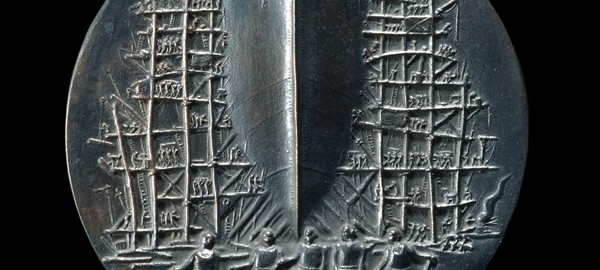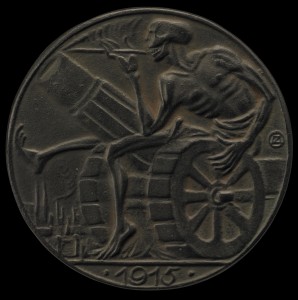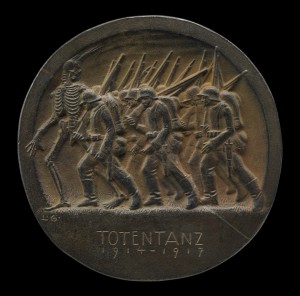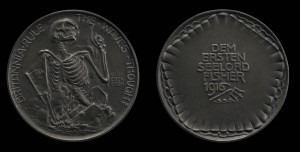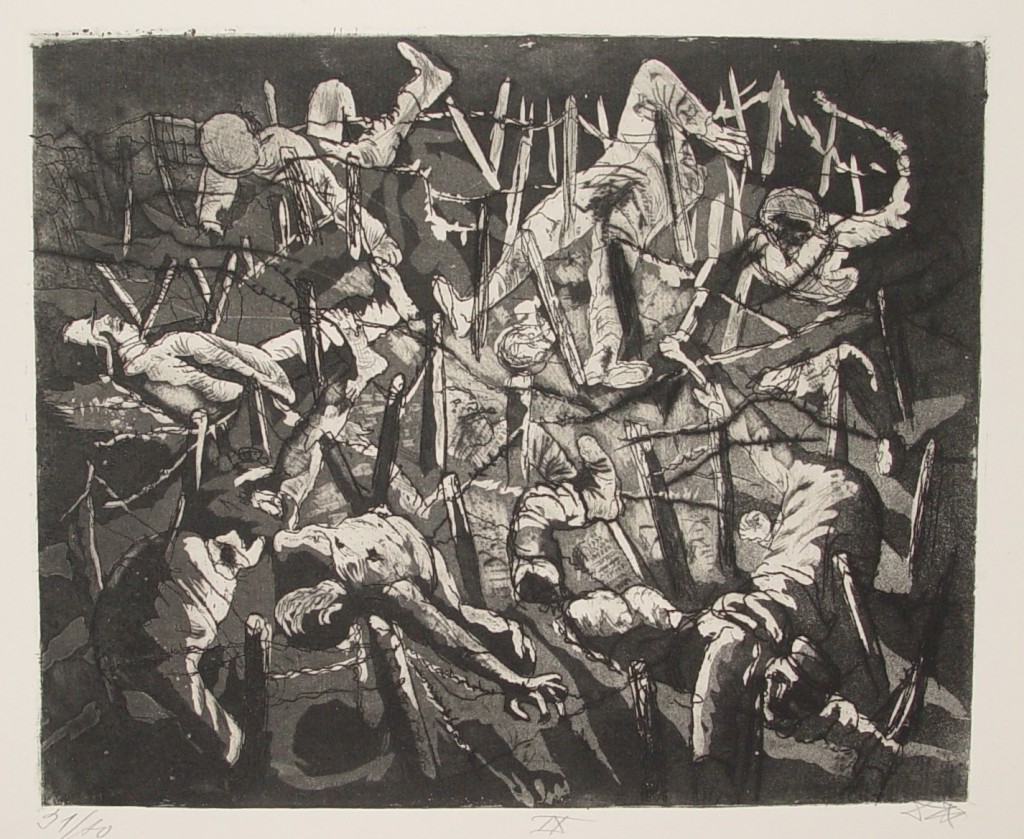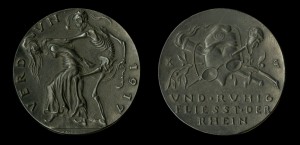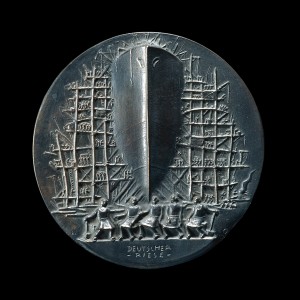The origins of the first ever national public museum lie with physician, naturalist and collector, Sir Hans Sloane who amassed an amazing hoard of some 71,000 objects of note during his lifetime. He bequeathed them to the nation and thanks to this gift, The British Museum opened in 1753. Coins and medals were part of the original collection and continue to feature to this day.
A new exhibition, fittingly entitled The Other Side of the Medal (How Germany saw the First World War) offers interesting insights into the art of propaganda and into the minds of the artists involved. The medals on show are not in fact military, they are miniature works of art, some of them larger than one might expect and all designed to be hand held.

The Russian Bear, by Ludwig Gies, 1917-1918. Russia wounded by the central European powers on either side.
Selected from a much wider collection held by the museum, they focus on artists who lived and worked in Germany between 1914 and 1919. About 500 related medals were acquired, just under 400 by keeper/curator George Hill during or shortly after the war with approximately 100 added in the decades that followed – some of them are purely commemorative whilst those in the show have been chosen to reflect the exhibition’s thought-provoking title. These medals were intended to influence popular opinion against Germany’s enemies and their first showing in Britain in 1916, as plaster cast copies at the V&A, caused a mixture of outrage and fascination. A number of originals were also displayed at the so-called Censor’s Museum of contraband with the aim of inciting popular opinion against Germany. Thus the material intended as propaganda turned into counter-propaganda, in more than one way.
As the horror and brutality of war sank in, many of the artists took on an increasingly subversive role, shifting their focus away from the glory and onto the sheer futility of combat and the appalling destruction and waste of life. The medieval Dance of Death motif was revived and skeletons began to populate many of the works, stalking battlefields, the seas and the sky – an ‘active malevolent presence and indiscriminate force of destruction’. In several pieces ships, machinery and other war paraphernalia were exaggerated in scale, counterpointing the frailty of mankind. These medals along with their often ironic titles provide a deeper, more universal anti-war comment which continues to resonate across political borders and the years since their design. One should congratulate George Hill and his colleagues for daring to collect such potent material, with the foresight to understand its future significance within the broader context of discussions surrounding WW1 and war in general.
The exhibition includes other material including old prints, most notably Otto Dix’s Totentanz anno 17 (Höhe toter Mann) / Der Krieg – Dance of death 1917 (the dead man’s mound); a pile of bodies and limbs entangled in barbed wire. Dated 1924 this powerfully dark etching and aquatint is one of the most striking supporting documents chosen to complement the story behind the medals’ production and distribution.
Commenting on the show’s importance, curator Thomas Hockenhull said: “German medals were maligned in Britain for a long time, because art critics and curators were unable to distance themselves from the works’ propagandist aspects. Negative allied critical reception formed an effective barrier to appreciating their collective inventiveness, diversity and wit. Attitudes changed during the 1970s and this exhibition is the culmination of forty years of aesthetic reappraisal. It offers an alternative perspective during a centenary year likely to be dominated in Britain by the allied experience of the conflict. One could even argue that it holds a mirror up to the allied experience, challenging longstanding attitudes about the War and its consequences.”
The exhibition is compact yet comprehensive; the works graphic, well executed and refined despite their sinister subject matter, with a powerful message which lingers way beyond the visit.
Entrance to Gallery 69a at The British Museum is free of charge. Thomas Hockenhull will be giving a gallery talk on 8th August 2014 – 13.15-14.00 which is also free.
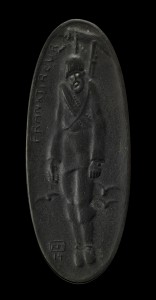
Hanging Sniper by Karl May, 1914. ‘FRANKTIREUR’ / ‘Free shooter’ as citizen soldiers operating in occupied France and Belgium were known.
The Other Side of the Medal: how Germany saw the First World War, 9 May to 23 November The British Museum, London
Text © Emma Boden
All photography © The British Museum
© Otto Dix print, posted here in accordance with fair use principles, may be protected by copyright.

